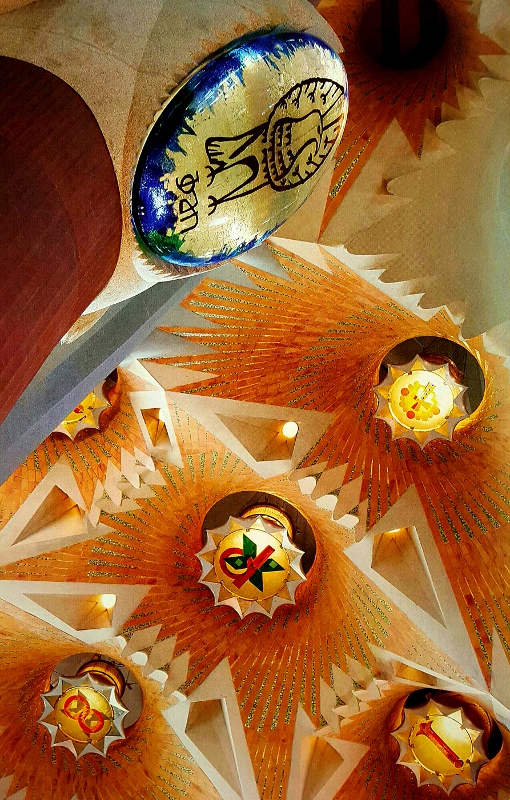By Bart Barry-

Editor’s note: For part nine, please click here.
*
These columns are written to spiral outwards from their centers organically as possible, structures from the fabled building blocks of letters that make words that make sentences that make paragraphs, searching as they do for what architect Robert Venturi called “richness of meaning rather than clarity of meaning” in his masterwork Complexity and Contradiction in Architecture.
In that same work, Venturi expressed a preference for “messy vitality over obvious unity,” adopting, among other essentialities, nature’s by-no-means-inevitable preference for variety – imposing, as nature does, a restriction of infertility on the product of any inter-species mating nature does not favor, preventing in as amoral a process as possible the emergence of a single-species world. Remember that next time PBC machinations have you down; equilibrium is an illusion one is able to create and sustain only by tampering with the variable t (time) in whatever schoolboy formulations one chooses to impose on a world in which every one of however many cells perpetually moves at the speed of electricity.
Whatever designs Al Haymon may have, the software loop that guides every organism, Prediction –> Feedback (every 300 or so milliseconds), ensures any model that holds anything constant necessarily fails or kills its subject to succeed. To apply numerical certainty to any complex adaptive system, one must create a complex adaptive system that comprises almost solely variables, and that almost fully undermines the elegance of applying numerical certainty, doesn’t it?
Or as John H. Holland, a University of Michigan professor of psychology and electrical engineering and computer science, elegantly puts it in his book Hidden Order: “The sheer number of interactions – hundreds of millions of neurons, each undergoing thousands of simultaneous interactions in thousandths of a second – takes us well beyond any of our experience with machines. The most sophisticated computer, in comparison, seems little more than an automated abacus.”
When one considers even the least-thoughtful human mind, likely pinging its environment for simple feedback about its physical state three times every second, one comes to nearly 200,000 unique “thoughts” every waking day, which comes to about 4 billion such events in an average human life of having not a single independent thought. Do something of volition simple as weekly grocery shopping, and you’re loping towards a trillion pretty quickly, and at that point linear mathematics’ description of your life is nearer to meaningless than astounding.
For the sake of embracing what is unfathomable, apply this model to a prizefighter training himself to counter an opponent’s left hook to the body, blocked by his right elbow, with a right uppercut. The feedback from the opponent’s left hook cannot wait, potentially, 299 milliseconds in its standard loop; it must come instantly, which means the mind must monitor at all times how many receptors sending signals across how many passageways? Go just one step further and realize this: Neurons and the signals they send are not binary (so there’ll be no mere squaring of whatever unthinkable number you come to); they occur in ranges that cross thresholds.
A+B=C, yes, but sometimes C=(A+B)*1,000. And then what? “More thoughts per human life than the number of seconds in the history of the known universe”? That’s not helpful; when your model says one complex organism is, in 75 years of life, able to do something more than a measure of a 15-billion-year-old system, your model, fundamentally, is describing a state that does not resemble anything like the “reality” the rest of us create from our 200,000 daily bits of feedback. That’s not a condemnation of conventional math or science, either; it is a concession to something Albert Einstein knew about Newtonian physics and John von Neumann knew about linear mathematics: They are agreed-upon vocabularies much as they are factual descriptions.
We know almost nothing, and technology, with its acceleratory effect, makes this ever more apparent, causing us anxiously to backbend towards nature in what Irish economist W. Bryan Arthur, in his wonderful book The Nature of Technology, captures tidily like this: “Our deepest hope as humans lies in technology; but our deepest trust lies in nature.”
And that brings us spiraling back to the Catalan master Antoni Gaudí and La Sagrada Familia basilica, the master’s masterpiece, a one-off form of architecture that appears, in many of its thousands of unique spots, to have inverted nature’s process, adapting function from a search for beauty rather than creating beauty from functional adaptations. Gaudí reveled in the natural complexity of fractals and superadjacency, the gorgeous simplicity of a shape repeated till it is a snail’s shell then repeated in concrete till it is a spire. In predictive obeisance to a later observation made by American physicist Philip Anderson – “The ability to reduce everything to simple fundamental laws does not imply the ability to start from those laws and reconstruct the universe” – Gaudí began from the beauty of his finished shape and worked backwards to its function.
Gaudí’s mind, like Shakespeare’s or Cervantes’, is no likelier to recur tomorrow than it was yesterday or today.
As complex adaptive systems that both comprise and compose other complex adaptive systems, our lives are constructed from countless events, every one of which is equal parts impossible and inevitable.
*
Author’s note: Anyone interested in the interdisciplinary approach taken by the men cited above is enthusiastically encouraged to read M. Mitchell Waldrop’s Complexity: The Emerging Science at the Edge of Order and Chaos.
*
Author’s note note: This column will not appear next week, allowing its author to pursue messy vitality in Colombia.
*
Editor’s note: For part 11, please click here.
*
Bart Barry can be reached via Twitter @bartbarry























